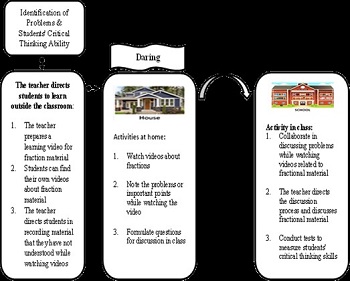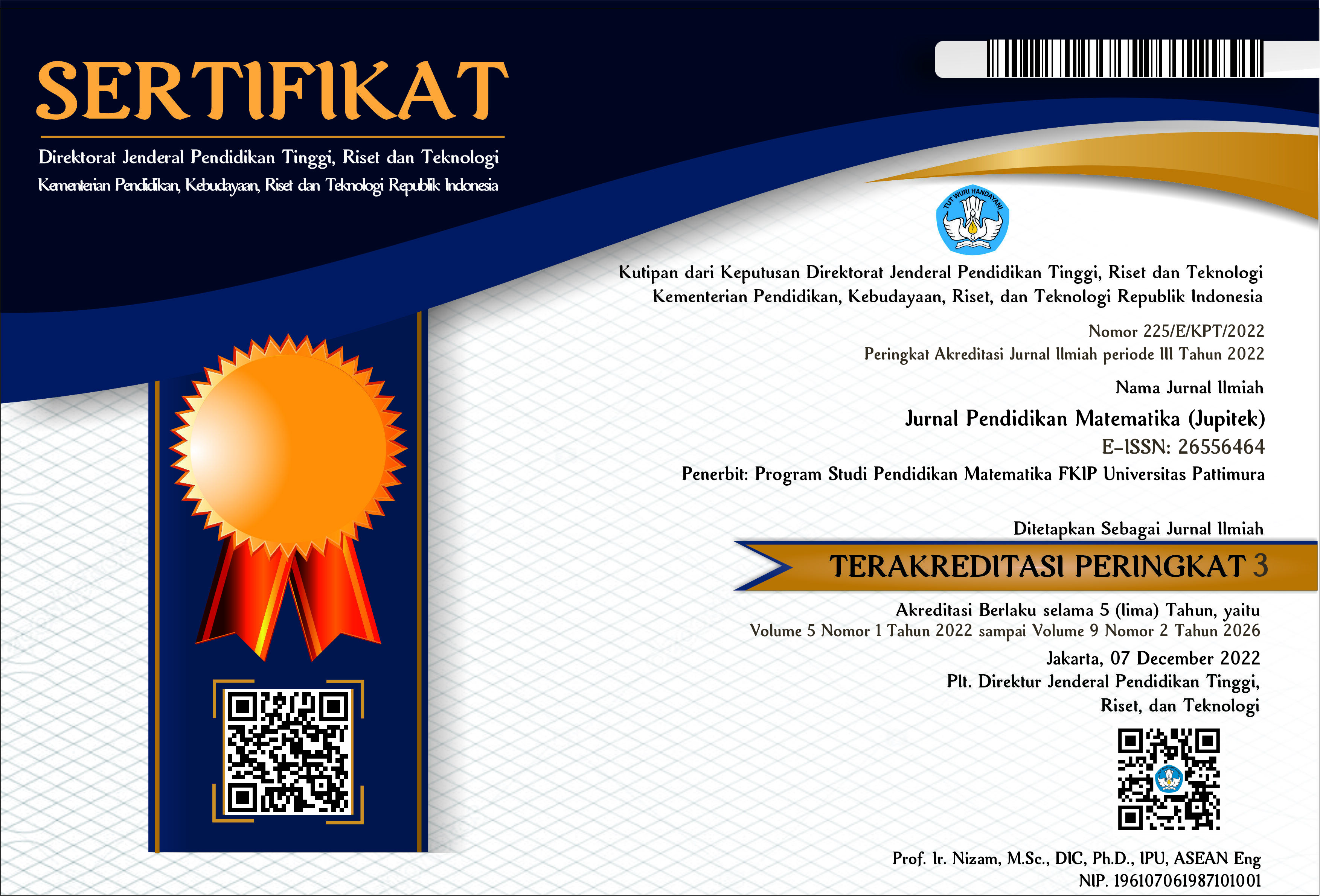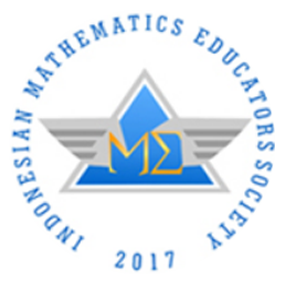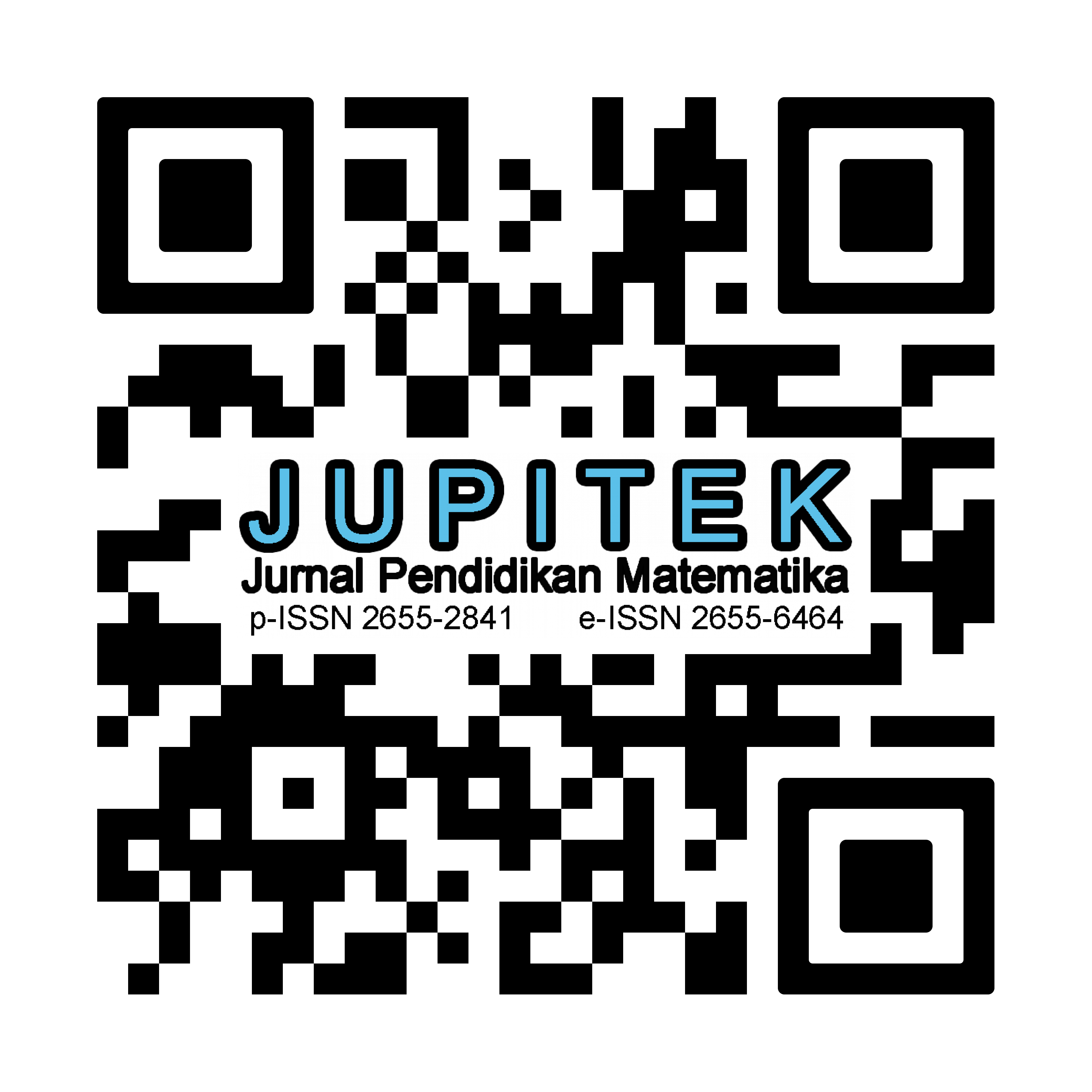THE EFFECT OF THE FLIPPED CLASSROOM MODEL ON THE MATHEMATICAL CRITICAL THINKING ABILITY OF ELEMENTARY SCHOOL STUDENTS
Abstract
This research study aims to determine the effect of the flipped classroom model on students' mathematical critical thinking skills. The research sample involved 35 grade 5 students of a public elementary school in Waai, Salahutu District, Central Maluku Regency. The research method uses a quasi-experimental and is analyzed using a paired sample test. The results of the analysis show that there is a positive influence from the flipped classroom learning model on students' mathematical critical thinking skills in the concept of fractionss. To find out the increase in critical thinking skills, N-gain is used. The findings showed that there was an increase, wherein the high category achieved an increase of 3.33%, the medium category was 93.34%, and the low category was 3.33%. The increase is because the flipped classroom model can create a dynamic and interactive mathematics learning environment with the help of learning videos, so students can think critically in exploring creative ideas to solve math problems
Downloads
References
Al-Zoubi, A. M., & Suleiman, A. M. (2021). Flipped Classroom Strategy Based on Critical Thinking Skills: Helping Fresh Female Students Acquiring Derivative Concept. International Journal of Instruction, 14(2), 791-810.
Atwe, Z., Sulayeh, Y., Abdelhadi, A., Abu Jazar, H., & Eriqat, S. (2022). Flipped Classroom Effects on Grade 9 Students’ Critical Thinking Skills. International Journal of Instruction, 15(2), 737-750.
Birgili, B. (2015). Creative and Critical Thinking Skills in Problem-based Learning Environments. Journal of Gifted Education and Creativity, 2(2), 71-80.
Charles-Ogan, G., & Cheta, W. (2015). Flipped Classroom Versus a Conventional Classroom in The Learning of Mathematics. British Journal Of Education, 3 (6), 71-77.
Davies, R. S., Dean, D. L., & Ball, N. (2013). Flipping the classroom and instructional technology integration in a college-level information systems spreadsheet course. Etr&D-Educational Technology Research and Development, 61(4), 563-580.
Flumerfelt, S., & Green, G. (2013). Using lean in the flipped classroom for at risk students. Educational Technology & Society, 16(1), 356-366
Ghilay, Y. (2021). Text-Based Video: The Effectiveness of Learning Math in Higher Education Through Videos and Texts. Journal of Education and Learning, 10(3), 55-63.
Hake, R (1998) Interactive-engagement vs. traditional methods: a six-thousandstudent survey of mechanics test data for introductory physics courses. American Journal of Physics, 66(1), 64-74.
Him Fung, C., Basser, M., & Keung Poon, K. (2021). Systematic Literature Review of Flipped Classroom in Mathematics. EURASIA Journal of Mathematics, Science and Technology Education, 17(6), 2-17.
Meltzer, D. E. (2002). The Relationship between mathematics preparation and conceptual learning gains in physics: A possible “hidden variable” in diagnostic pretest scores. American Journal of Physics, 70(12), 1259-1268.
Mayer, R. E. (2001). Multimedia Learning. Cambridge University Press. (Online), Available: HTTPS 10.1017/CBO9781139164603
Nguyen, T. T. K. (2017). Flipped Clasroom Teaching Methods: A Survey. International Journal of Engineering Sciences & Management Research (IJESMR), 4(4), 62-67.
Prihatin, A. (2019). Penerapan Flipped Classroom Menggunakan Rumah Belajar. Pena (Rumah Belajar). (Online), Available: http:// pena.belajar. kemdikbud.go.id/2019 /11 /penerapan- flipped- classroom- menggunakan- rumah-belajar
Piehler, C. (2014). FLN Shares its Four Pillars of Flipped Learning. THE Journal: Transforming Education Through Technology, (Online), Available:https://thejournal.com/articles/2014/03/12/fln-announces- formal- definition -and-four-pillars.aspx
Ramadhani, R., Bina, N. S., Sihotang, F.S., Narpila, S.D., & Mazaly, M. R. (2020). Students’ critical mathematical thinking abilities through flipproblem based learning model based on LMS-google classroom. Journal of Physics: Conference Series, 1657. doi:10.1088/1742-6596/1657/1/012025.
Rapi, N. K., Suastra, I. WP. Widiarini, I. W. Widiana. (2022). The Influence of Flipped Classroom-Based Project Assessment on Concept Understanding and Critical Thinking Skills in Physics Learning. Indonesian Journal of Science Education, 11(3), 351-362.
Saputra, EA. M., & Mujib. (2018). Efektivitas Model Flipped Classroom Menggunakan Video Pembelajaran. Desimal: Jurnal Matematika, 1(2), 173 – 179.
Shi, Y., Ma, Y., MacLeod, J., & Yang, H.H. (2020). College Students’ Cognitive Learning Outcomes in Flipped Classroom Instruction: A Meta-Analysis of The Empirical Literature. Journal of Computers in Education, 7 (1), 79-103.
Staddon, R. V. (2022). A Supported Flipped Learning Model for Mathematics Gives Safety Nets for Online and Blended Learning. Computers and Education Open, 3, 1-11.
Strayer, J. F. (2012). How learning in an inverted classroom influences cooperation, innovation and task orientation. Learning Environments Research, 15(2), 171-193. doi: 10.1007/s10984-012-9108-4.
Strohmyer, D. (2016). Student Perceptions of Flipped Learning in a High School Math Classroom. Walden University, (Online), Available: https://core.ac.uk/download/pdf/147834947.pdf.
Takaria, J., & Talakua, M. (2018). The Ability Of Statistical Literacy Student Teacher Candidate In Terms Of Prior-Ability On Mathematics. Jurnal Kependidikan Penelitian Inovasi Pembelajaran, 2(2), 395-408.
Unakorn, P., & Klongkratoke, U. (2015). Effectiveness of Flipped Classroom to Mathematics Learning of Grade 11 Students. The International Conferece on Language Education Humanities Innovation (ICLEHI), 118-122.
Yerison., Triwani., & Musdi, E. (2022). Effectiveness of Mathematics Learning Devices Based on Flipped Classroom to Improve Mathematical Critical Thinking Ability Students. I. J. Education and Management Engineering, 3, 41-46. DOI: 10.5815/ijeme.2022.03.05.

Copyright (c) 2023 Nessy Pattimukay, Johannis Takaria, La Suha Ishabu

This work is licensed under a Creative Commons Attribution-NonCommercial-ShareAlike 4.0 International License.
License and Copyright Agreement
By submitting a manuscript to Jurnal Pendidikan Matematika (JUPITEK), the author(s) certify and agree to the following terms:
- Originality and Authority: The submitting author is authorized by all co-authors to enter into this agreement. The manuscript describes original work that has not been published previously in a peer-reviewed journal, nor is it under consideration for publication elsewhere.
- Approval: Its publication has been approved by all author(s) and by the responsible authorities of the institutions where the work was carried out.
- Rights: The authors secure the right to reproduce any material that has already been published or copyrighted elsewhere.
- Licensing and Copyright: Authors retain the copyright to their work.
- License Grant: The authors grant Jurnal Pendidikan Matematika (JUPITEK) the right of first publication, with the work simultaneously licensed under the Creative Commons Attribution-NonCommercial-ShareAlike 4.0 International (CC BY-NC-SA 4.0).
- Self-Archiving: Authors are permitted and encouraged to deposit the published version of their article in institutional repositories, on their personal websites, and other academic platforms, with proper acknowledgment of its initial publication in Jurnal Pendidikan Matematika (JUPITEK).





.png)


